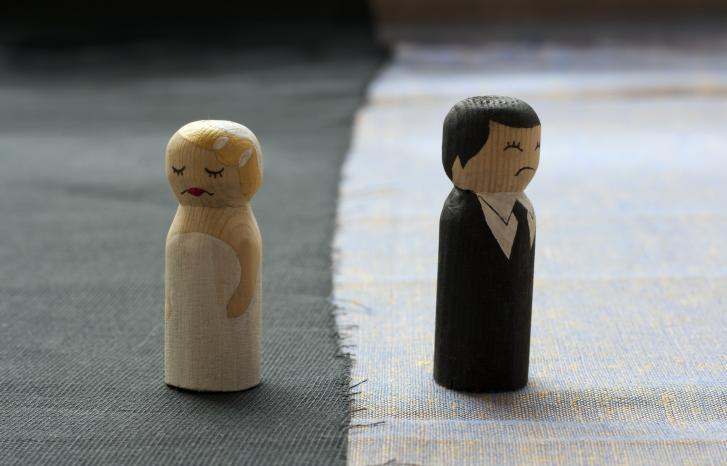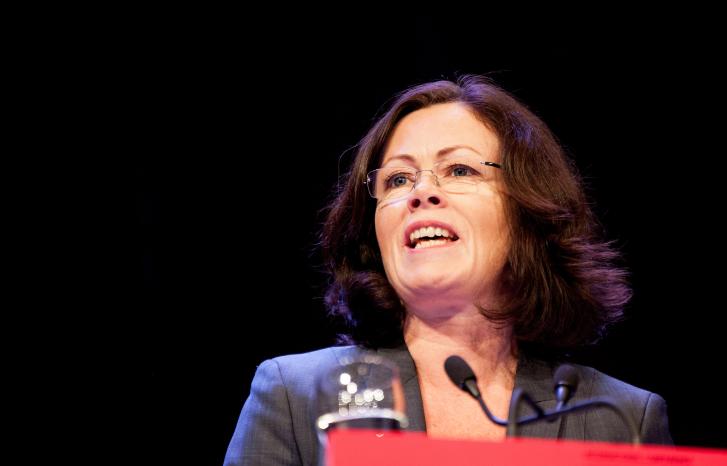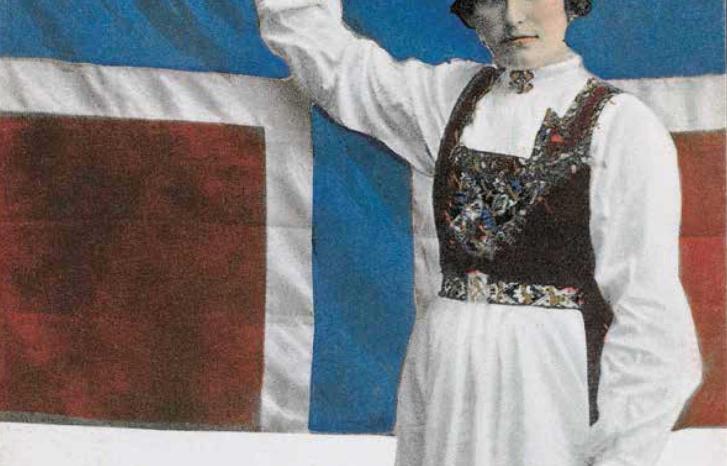“It is not as natural today that women’s rights are ranged below the freedom of religion as it was in the 70s,” says Stina Hansteen Solhøy.
The protection against discrimination has been strengthened. Equality considerations demand more room. Boundaries are being pushed.
But when entering the so-called core of the religious communities, often understood as appointment of religious leaders and instructors, there are clear boundaries as far as equality politics are concerned.
“Within this core area the religious communities are given autonomy. It is regarded as a sort of infallible truth within Norwegian politics. A given demarcation.”
Does equality have general application?
Solhøy recently defended her PhD thesis on the relation between the State’s equality politics and the religious communities’ right to be exempted from such politics in the name of religious freedom. Exemptions from the Gender Equality Act are investigated in relation to the Church of Norway and its right to discriminate between men and women in appointment processes.
“There is strong political will to promote equality, but this will constantly encounter other considerations,” says Solhøy.
“We want full equality, and equality should have general application. It is a Norwegian core value that we promote to the rest of the world and that we are world champions at. But then there is this one question: is it possible that at the end of the day, equality can’t have general application?”
A constant issue since Norway passed its first Gender Equality Act in 1978 has been whether religious communities should be allowed to discriminate between the genders in matters central to religious practice.
“Women are the ones who are excluded, not men,” Solhøy points out.
“In the official Power and Democracy Report, Hege Skjeie and Mari Teigen emphasised that this is part of a larger pattern in society, where women’s rights count slightly less than other considerations such as religious freedom. In my material, the major point of concern has been male priests’ right to be exempted from working with female priests, not female priests’ right to work.
The major point of concern has been male priests’ right to be exempted from working with female priests, not female priests’ right to work.
Advance of equality
Solhøy has examined the last forty years’ politics on this field, from 1974 to 2014.
In the 1970s, Norway got its first Gender Equality Act, in which religious communities were given a special provision of exemption – a provision that lasted for thirty years.
In the 1980s and 90s, gender equality entered the Church’s own legislation. Women were given the same right as men to become priests, and eventually they were also allowed to be appointed as bishops.
The policy in the 2000s concerns a strengthening of the legal protection against discrimination in Norway, partly as a result of external pressure from EU directives and international law such as UN Women’s Convention (CEDAW).
The 2000s are also characterised by two potentially conflicting trends: religion has seen a comeback within the public sphere while gender equality at the same time has established itself as a given and inviolable human right.
Religious communities’ right of exemption was removed from the legislation during the 2000s, and the possibility to discriminate has been retrenched, but what Solhøy refers to as the religious inner core is still protected.
Internal affairs in religious communities exempted
The debate about a Norwegian equality legislation began with the first draft legislation in 1974.
The law would protect from discrimination against women and men outside the private sphere. The private sphere was defined as religious communities, family life, friends, social gatherings, and humanitarian and social organisations. According to the Ministry of Government Administration and Consumer Affairs, the legislative power should not interfere in these areas.
“There was much uproar when the proposal was up for consultation,” says Solhøy.
“It was the year 1974, the feminist movement’s slogan was that the personal is political, and then we get a draft proposal saying that the private is to be exempted.”
The feminist movement fought the battle and won – the law was to apply to all spheres, even the private. With one exception: internal affairs within religious communities.
“The feminist organisations were more concerned with private life in general. None of them raised the question regarding religious communities as part of the private in their consultative statements.”

The Church fight for their right to discriminate
The Church of Norway was proposed to be included in the act, however. This caused major outcry among the bishops.
According to the consultative statement from the Faculty of Theology, the appointment of female priests would arouse discord and discomfort, and it would be detrimental also to the female priest herself. The bishop of Nord-Hålogaland argued that it had nothing to do with men and women not being of equal worth, but that they kept different places in society. This was not about women’s rights; it was about theology and religious belief, and could not be nullified with legal clauses.
The bishops won ground.
“It wasn’t specified in the law itself, but in the legislative history it was maintained that priests and parish clerks in the Church of Norway were exempted,” says Solhøy.
See also: Feeling gender: from housewife to working mum
Jurists become more important
While the feminist movement was central to the development of the equality politics in the 1970s, the jurists enter the scene in the 2000s.
EU legislation and UN conventions are making the laws against discrimination more complex, and Solhøy points out the Discrimination Law Commission and the Institute of Women’s Law at the University of Oslo as important actors.
“Supranational legislation from EU and the UN in addition to the jurists’ increasingly important role is often referred to as a judicialisation of politics. Suddenly, something that has previously been regarded as a political matter becomes judicial. How does this affect the discrimination legislation in Norway?”
“International law has become a powerful tool that has provided the opportunity to push the boundaries in terms of what is accepted from the religious communities and when they are subjected to the equality policy,” says Solhøy.
“Feminist movements in Norway haven’t been preoccupied with religious communities, nor has the Government pushed for gender equality within the religious communities. Therefore, this has been a positive development for women who are employed in the Church of Norway or other religious communities.”
Who owns religion, who owns the religious community? Who has power to decide that we don’t want female priests and imams?
At the same time, something might get lost when the law is left to put things straight.
“At some stage there are limits for the law, and the boundary goes along ʻthe religious coreʼ. Then the law is set to counterbalance rights, between religious freedom and protection against discrimination. It becomes a legal debate. An alternative way to do it might be to actually talk to those involved.”
Solhøy refers to Professor Susan Moller Okin amongst others. She is known for her essay Is multiculturalism bad for women. If the Government is to exempt religious communities it should at least talk to those involved, to the women who might be discriminated, according to Okin.
“This is not just about law and legal rights; it is also about power. Who owns religion, who owns the religious community? Who has power to decide that we don’t want female priests and imams?” says Solhøy.

The political right wing choose religious freedom
In Norway, the Labour Party (AP), the Socialist Left Party (SV), and the Centre Party (SP) have embraced the international anti-discrimination laws in matters regarding exemption for religious communities, according to Solhøy.
“Today, the Conservative Party (H) and the Progress Party (FrP) are in Government. During the entire forty-year period I have studied, these two parties as well as the Christian Democrats (KrF) and the Liberal Party (V) have emphasised the autonomous right of the religious communities and religious freedom in debates about religious communities and equality,” says Solhøy.
“In cases of conflict, religious freedom has been more important for these parties than women’s rights.”
I thought the State had been an important advocate for equality within the Church of Norway, but that’s not the case at all when it comes to formal regulations.
The State has let the Church carry on as it wants
To Solhøy’s surprise, the Norwegian State, with its various Ministries of Church Affairs over the years, has proven to be very reserved towards the Church of Norway.
“I thought the State had been an important advocate for equality within the Church of Norway, but that’s not the case at all when it comes to formal regulations,” says Solhøy.
“I see this as an expression of a liberal reasoning indicating that development should come from within, particularly when it comes to equality. It shouldn’t come as a result of governmental decrees. This is the opinion of both the State and the Church of Norway.”
According to Solhøy, the fact that the Church has female priests and bishops today, and internal regulations ensuring women’s rights is a result of internal processes, efforts from Norwegian Women’s Theologians’ Association and other ecclesiastical women’s activists and ecclesiastical equality activities.
She makes the reservation that she has only had access to formal documents in her investigation – things might have happened off the record that she is not aware of.
Funding requirements?
Norway in 2016 is a country with much more religious complexity than in the 1970s. And it is a country in which the state church is in the process of being liquidated. In 2017, Norwegian priests are no longer state-employed; they’re employed by the Church itself.
Minister of Culture Linda Hofstad Helleland recently stated that politics on religion is due back on the agenda. The 2013 official report from the Stålsett committee is coming out of the drawer.
One of the proposals from the Stålsett committee – which fifty per cent dissented from – was about gender equality and funding of religious communities in Norway, something Solhøy has written about in previous work.
“The authorities could impose certain funding requirements on the religious communities, along the same lines as requirements imposed on children’s and youth organisations to be democratic. These organisations are not allowed to discriminate,” says Solhøy.
“As of today, it is a prerequisite from the State that the religious communities follow Norwegian law, but there are no specific funding requirements.”
See also: Justifying gender equality through Islam
New debate, stronger regulations?
“Over the last years we’ve seen more and more media reports on gender and religion. About religious communities in rented premises with separate entrances for men and women, and the infamous debate about hijab in the police. How do you think these debates will affect the regulation of religious communities in the future? Will we be more insistent on the applicability of equality regulations?”
“I think we will have more debates like these. But I can’t predict whether this will result in stricter demands,” says Solhøy.
“According to my findings, the concern for religious freedom is stable. Many are upset when religious communities discriminate on the basis of gender and sexuality, yes. But there is no tradition or political will to set strict official demands within areas belonging to the religious communities’ inner sphere. If the State choses to do so in the future it breaks with previous practice.”
Reference:
Solhøy, Stina Hansteen (2016) “Exemptions for religious communities? Policymaking between Governmental equality ambitions and religious autonomy 1974-2014” (Unntak for trossamfunn? Politikkutforming i spenningsfeltet mellom statlige likestillingsambisjoner og religiøs autonomi 1974-2014), Department of Political Science, Faculty of Social Sciences, University of Oslo.
Translated by: Cathinka Dahl Hambro
- Norway’s first Gender Equality Act was passed in 1978 and included “all spheres except internal affairs within religious communities.”
- The exemption was altered in 2010 and removed in 2013.
- Today, religious communities have the same access to exemptions from the law as others according to §6 on legitimate discrimination; the exemption must be just, necessary, and proportionate.
- In relation to the Government’s new proposed Anti-Discrimination Act, exemption for religious communities has not been subject to much debate. However, the decision whether the law should include the private sphere, which was hotly debated in the 1970s, is now back on the agenda.
- Jurist Vibeke Blaker Strand has argued that the removal of the private sphere from the ambit of the law may provide religious communities an extended opportunity to claim belonging to the private sphere and thus not covered by the Anti-Discrimination Act.
- Valborg Lerche was the first woman who graduated with a degree in theology in 1889, but she did not have access to take up ecclesiastic office.
- Women were given the same voting right as men at congregation meetings as early as in 1903, ten years before universal suffrage for women was passed in Norway.
- In 1938, the Norwegian Storting (Parliament) decided to give women and men equal right to become priests.
- Norway did not get its first female priest until Ingrid Bjerkås in 1961. The same year, a majority of the country’s bishops maintained that women’s priestly service was not compatible with scripture or ecclesiastic tradition.
- In the 1990s, the Church Meeting agreed as a main objective that no gender should be underrepresented by less than forty per cent in parish councils, diocesan councils or church councils.
- In 1990, the Church Meeting agreed that female bishops would be an enrichment to the Church.
- Rosemarie Köhn became Norway’s first female bishop in 1993.
- In 2012, 27 per cent of the priests in the Church of Norway were women.
- Today, the Church of Norway has four female bishops: Helga Haugland Byfuglien, Ingeborg Midttømme, Solveig Fiske and Ann-Helen Fjeldstad Jusnes.
- Helga Haugland Byfuglien was appointed the Church of Norway’s first female Praeses in 2011. The Praeses is the leader of the Bishops’ Council and the Church of Norway’s top representative.



